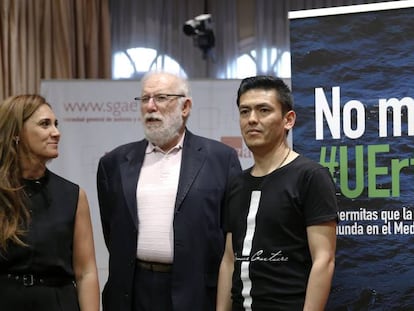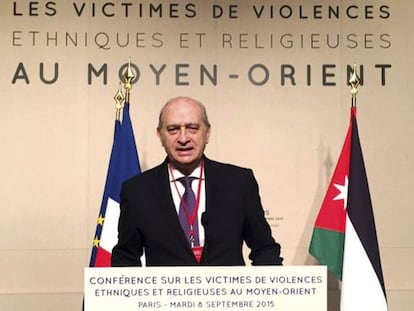Fleeing from horror: Central African Republic’s worsening refugee crisis
Some 275,000 people from the strife-torn country are now living as refugees in Cameroon

Adamou Ibrahim was at the mosque when the shooting began. “I had gone to pray and I escaped from there with a bullet in my right thigh. With neither the time nor the opportunity to have the wound treated, he fled his home in the east of the Central African Republic (CAR) with his wife and two children.
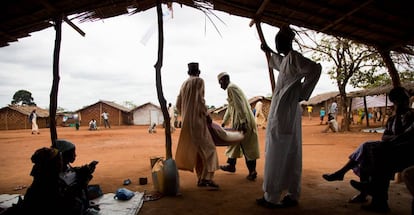
Three years and one child later, Ibrahim, 30, relates his journey to the Timangolo refugee camp in Cameroon, just 45 kilometers from the CAR border. Like Ibrahim, around 160,000 people have fled the troubled country since 2014, the majority of them Bororo, a largely Islamic subgroup of the Fulani ethnic group who traditionally live as nomadic cattle herders.
That exodus was provoked by clashes between the chiefly Muslim Séléka rebel coalition and the anti-Balaka militia, who are mostly Christian. The fight for power spilled over into a civil war with religious overtones and degenerated into the massacre of civilians and the exodus of thousands of families like those of Ibrahim.
After a brief period of deceptive calm in the CAR, the conflict has taken hold again in recent weeks sliding dangerously toward a new escalation in violence, with dozens of deaths and thousands of people internally displaced. The United Nations Multidimensional Integrated Stabilization Mission (Minusca) has struggled to contain the situation. Five peacekeepers died in an attack in May.
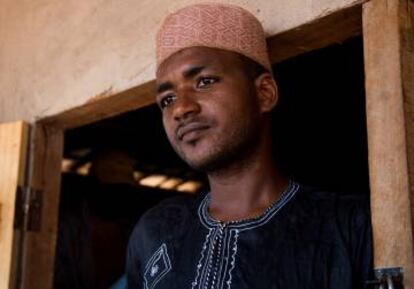
Against this backdrop, CAR refugees in Cameroon – a population the UN refugee agency Acnur estimates at 275,000, of a total of 481,000 people from the CAR thought to be living in neighboring countries – are eking out a precarious living without little hope of returning. “I am not sure that I want to go back,” says Ibrahim, an opinion shared by many of his compatriots according to an Acnur poll.
Some 30% of people from the CAR living in forced exile in Cameroon are based in seven refugees camps in the east and central northern part of Cameroon, with the remainder living in the general community, although still dependent on aid from international humanitarian agencies, which, after three years of conflict, have found themselves obliged to cut back on assistance, including food distribution.
“The local communities have been very hospitable but they are also very poor. Resources and services are limited and there is very little work,” explains Baseme Kulimushi, who heads up Acnur operations in eastern Cameroon – one of the least developed regions in a country home to 23.7 million people which occupies 153rd position in the United Nations’ Human Development Index (HDI). The CAR, with 4.8 million inhabitants, is in second-last place in that list at 187.
With family and cultural relations that defy national borders, there has been no significant religious tension between the Muslim refugees from the CAR and locals in Cameroon, a majority of whom are Christian, but the conflict over resources is another story. “The refugees are mainly nomadic cattle herders and the locals are famers. It’s a challenge to share this living space,” says Emmanuel Halpha, prefect for the region of Kadey, where several camps are located.
The United Nations World Food Programme has halved its food aid to Cameroon
In municipalities like Boubara, some 30 kilometers from Timangolo, the arrival of the refugees has been welcomed, despite the difficulties, because of the benefits of international aid. “We have more water access points and there have been improvements at the hospital,” says 55-year-old Amin, who has, thanks to an NGO, found work producing feed for the refugees’ livestock – a system that also helps avoid the conflicts that arise when those animals eat the crops produced by locals. But this is another program that can only keep going while the money is flowing.
It is a fragile balance. There doesn’t seem to be a solution for a CAR crisis and “it attracts fewer and fewer funds” that are needed to cover the basic needs of refugees, Kulimushi warns. Acnur put the necessary sum for refugees in Cameroon at $55 million in 2016. Just $21 million arrived.
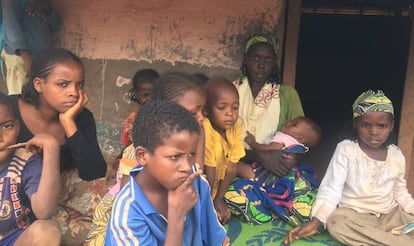
The World Food Programme (WFP) has been forced to slash its food aid by half. Refugees currently receive 5.2 kilograms per person per month. With daily consumption at just above 1,000 calories, equivalent to being on a diet, food insecurity now affects 25% of people in this group.
It is also becoming increasingly difficult to maintain projects that boost self-sufficiency among refugees, or at least lead to greater autonomy. This is the case with the cash-based transfer system in which refugees are informed – via SMS – of the amount of money assigned to them by the WFP to spend on basic foodstuffs every month. That list of basic products can be supplemented with goods sold by Cameroonians merchants, which benefits that group and opens the door to work opportunities for some of the refugees. “I buy them rice, sardines or pasta and I get a small commission,” explains Ibrahim.
The local communities have been very hospitable but they are also very poor Baseme Kulimushi, head of UN refugee operations for eastern Cameroon
For 25-year-old Ousman Kaltoumi there is nothing strange about using a mobile phone to buy food. His problem is “it’s not enough food” for four children aged from four months to eight years old. Ousman explains that he spends part of the day in the fields “selling bananas and yucca,” entrusted to him by local farmers, in a bid to get more food for his family.
The need for more food – along with more work opportunities – is the chief demand of refugees who are concerned about the diminishing aid, something highlighted by the aid agencies and the EU, with whose Directorate-General for European Civil Protection and Humanitarian Aid Operations (ECHO) EL PAÍS travelled to the CAR in May.
Since 2013, the EU has given $500 million to the CAR and to countries that house refugees from that country. That aid remains “crucial” in terms of promoting autonomy for refugees and “avoiding tensions with local populations,” says Delphine Buyse, head of ECHO in Cameroon.
English version by George Mills.
